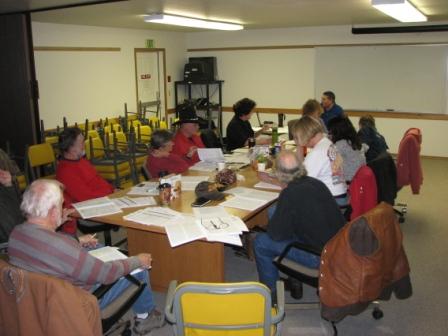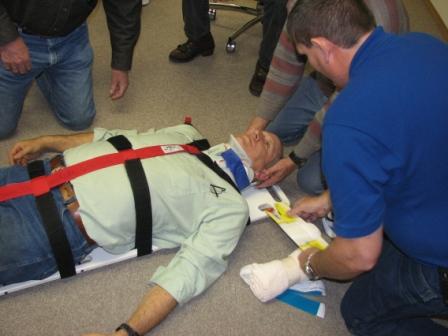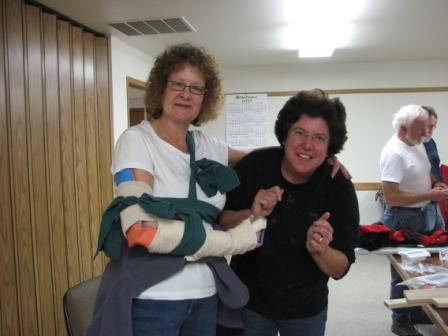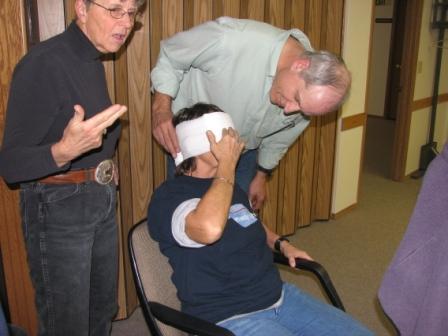Handling, riding, and driving horses have a number of risks.
Riding has some inherent risks, as when mounted, the rider’s head may be up to 4 m (13 ft) from the ground, and the horse may travel at a speed of up to 65 km/h (40 mph).
The injuries observed range from very minor injuries to fatalities. A recent study in Germany reported that the relative risk of injury from riding a horse, compared to riding a bicycle, was 9 times higher for adolescents and 5.6 times higher for younger children, but that riding a horse was less risky than riding a moped.

In Victoria, Australia, a search of state records found that equestrian sports had the third highest incidence of serious injury, after motor sports and power boating. In Greece, an analysis of a national registry estimated the incidence of equestrian injury to be 21 per 100,000 person-years for farming and equestrian sports combined. Other findings were that use of spurs may contribute to ankle fractures and dislocations, and helmets likely prevent traumatic brain injuries.
In the United States each year an estimated 30 million people ride horses, resulting in 50,000 emergency room visits (1 visit per 600 riders per year). A survey of 679 equestrians in Oregon, Washington, and Idaho estimated that at some time in their equestrian career one in five will be seriously injured, resulting in hospitalization, surgery, or long-term disability.
Among survey respondents, novice equestrians had an incidence of any injury that was threefold over intermediates, fivefold over advanced equestrians, and nearly eightfold over professionals. Approximately 100 hours of experience are required to achieve a substantial decline in the risk of injury.
Mechanisms of injury
The most common mechanism of injury is falling from the horse, followed by being kicked, trampled, and bitten. About 3 out of 4 injuries are due to falling, broadly defined. A broad definition of falling often includes being crushed and being thrown from the horse, but when reported separately each of these mechanisms may be more common than being kicked.
 Types and severity of injury
Types and severity of injury
In Canada, a 10-year study of trauma center patients injured while riding reported that although 48% had suffered head injuries, only 9% of these riders had been wearing helmets at the time of their accident. Other injuries involved the chest (54%), abdomen (22%), and extremities (17%).
A German study reported that injuries in horse riding are rare compared to other sports, but when they occur they are severe. Specifically, they found that 40% of horses riding injuries were fractures, and only 15% were sprains.
Furthermore the study noted that in Germany, one quarter of all sport related fatalities are caused by horse riding. Most horse related injuries are a result of falling from a horse, which is the cause of 6080% of all such reported injuries.
Another common cause of injury is being kicked by a horse, which may cause skull fractures or severe trauma to the internal organs.
Some possible injuries resulting from horse riding, with the percent indicating the amounts in relation to all injuries as reported by a New Zealand study, include:
Arm fracture or dislocation (31%)
Head injury (21%)
Leg fracture or dislocation (15%)
Chest injury (8%)
 Riding in the Back Country
Riding in the Back Country
With the possibility of being injured very real, and the likely hood of being able to call 911 and have an EMT team arrive quickly very low, it is important that back country riders have training in First aid.
The typical first aid course available is for urban environments. All action plans start with “Is the accident scene safe?”, “Call 911”, “check for breathing”, etc.
When riding in the back country, a different type of training is necessary. It starts with the premises that help is 6 to 12 hours away and calling 911 is not the first step.
Squaw Butte is fortunate to have as a member Dan Murphy, who has been a professional EMT and emergency responder and teacher. Dan became certified to teach Wilderness First Aid for the American Safety & Health Institute in 2011 and in December lead a course for twelve of our members.
This sixteen hour course covered:
· Initial Assessment
· Physical Exam
· Vital Signs
· Shock Management
· Control of Bleeding
· Burn Care
· Assessing and Splinting Fractures
· Assessing and Treating Head & Spinal Injuries
· Environmental Hazards
· Biological hazards
· Wilderness first aid kits
 The course combined class room lectures and hands on training, with a heavy emphasis on what to do in typical situations that back country riders are likely to encounter in Idaho.
The course combined class room lectures and hands on training, with a heavy emphasis on what to do in typical situations that back country riders are likely to encounter in Idaho.
While we strive to make our rides and events as safe as possible, it is nice to know that a number of our members have taken the time to be trained so if an injury does occur they know what to do, to help have a positive outcome.
